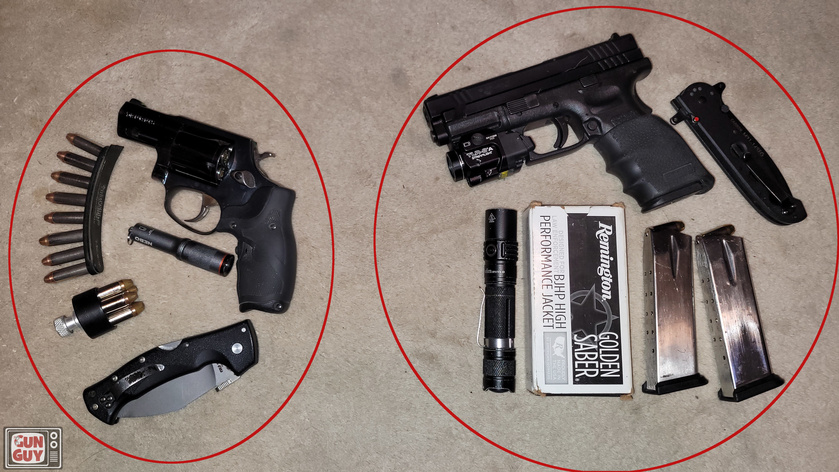Today I drove about 125 miles away from my home on business. I did what I always do.
The items on the left were on my person. I also brought an ankle holster for that gun in case I switched to the larger gun and wanted to carry the snubbie as a back-up.
The items on the right were in the truck - pistol locked in the pistol safe that is bolted to the truck.
It was an uneventful day, so the items on the right never left the truck until I returned home. Had something happened that caused me to feel I needed more gun (civil unrest for example), I could easily have switched load-outs. There was also a level 4 vest, walkout bag with gear, food, water, an additional 100 rounds, 3 extra mags, and a satellite communicator in the truck.
Plan A: Drive home - if the route is safe.
Plan B: Find a hotel/motel and shelter in place until the storm passes. Then drive home, if my vehicle survives.
Plan C: Find a remote area to shelter in place and stay with the vehicle.
Plan D: Leave my vehicle if rendered inoperative, then commandeer another vehicle, pay for a ride, or walk.
I always keep enough cash to pay my way.
I will probably never need any of this. Still, a plan fails automatically when you don't have one. Also, have a plan B and a plan C for when B doesn't work.

In the first half, attorney Sean Maloney from Second Call Defense joins me to explain the lessons gun owners can learn from what happened to Kyle Rittenhouse.
In the second half, I discuss a home invasion case from Oceanside California in which the homeowner successfully defended himself.













